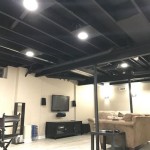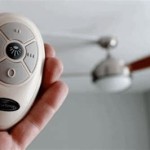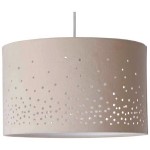Essential Aspects of Flush Light Fittings For Low Ceilings
When it comes to illuminating spaces with limited vertical space, flush light fittings emerge as the ideal solution. These fixtures hug the ceiling closely, offering both functional and aesthetic benefits for low-ceilinged rooms. Understanding the key aspects of flush light fittings can help homeowners make informed decisions to enhance their interiors with style and functionality.
Size and Scale
The size and scale of flush light fittings play a crucial role in complementing the dimensions of the room. For low ceilings, smaller fixtures are usually more suitable, as they maintain a sense of spaciousness and avoid overwhelming the room. Consider the overall proportions of the room, including furniture and other décor, to determine the optimal size for your flush light fitting.
Intensity and Color Temperature
The intensity and color temperature of the light emitted by flush light fittings can significantly impact the ambiance of the room. Brighter fixtures with a cool color temperature (e.g., bluish-white) provide a more energizing atmosphere, while warmer color temperatures (e.g., amber-yellow) create a cozy and inviting space. Choose the intensity and color temperature based on the desired mood and functionality of the room.
Style and Design
Flush light fittings come in a wide range of styles and designs, from classic to contemporary. Consider the overall décor of the room and select a fixture that complements the existing elements. For example, a traditional room might benefit from a flush light fitting with intricate detailing, while a modern space could be enhanced by a sleek and minimalist design.
Materials and Durability
The materials used in flush light fittings affect their durability and aesthetic appeal. Metal fixtures, such as brushed nickel or chrome, offer a sleek and durable option. Glass or acrylic shades can diffuse light beautifully, creating a soft and ambient glow. Consider the desired level of durability and the cleaning and maintenance requirements when selecting the materials for your flush light fitting.
Energy Efficiency
Energy efficiency is an important consideration for any lighting fixture, including flush light fittings. Look for fixtures that utilize energy-efficient technologies, such as LED bulbs. These bulbs consume less energy while providing the same or even better levels of illumination, reducing electricity costs and promoting environmental sustainability.
Installation and Maintenance
Proper installation is essential for the safety and longevity of flush light fittings. Consult a qualified electrician for professional installation to ensure the fixture is securely mounted and operates correctly. Regular maintenance, such as cleaning the fixture and replacing bulbs, is also important to maintain its functionality and appearance.
By considering these essential aspects, homeowners can choose flush light fittings that not only illuminate their low-ceilinged spaces but also enhance the overall aesthetic and ambiance of the room. From size and scale to style and durability, understanding these factors can lead to well-informed decisions that transform interiors with light and style.

Low Ceiling Flush Mounted Pendant Lighting Solution Spread Out

Lighting Ideas For Low Ceilings Advice Lamps Plus

10 Best Kitchen Lighting Ideas For Low Ceilings Carla Bast Design

27 Best Kitchen Light Fixtures For Low Ceilings Lightlady Studio

Buy Traditional Flush Ceiling Light For Low Ceilings And Hallways

Low Ceiling Lighting Ideas For Your Home Designcafe

Flush Mount Ceiling Light Lamp Space Saving Lighting Solution For Low Ceilings China Pendant Made In Com

Light Fixtures For Low Ceilings Classical Chandeliers Blog

25 Of The Best Living Room Lighting Ideas For Low Ceilings Lightopia

Low Ceiling Lighting Ideas For Your Home Designcafe
Related Posts








